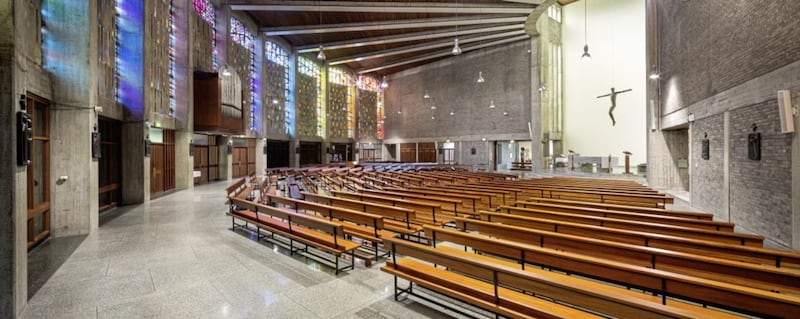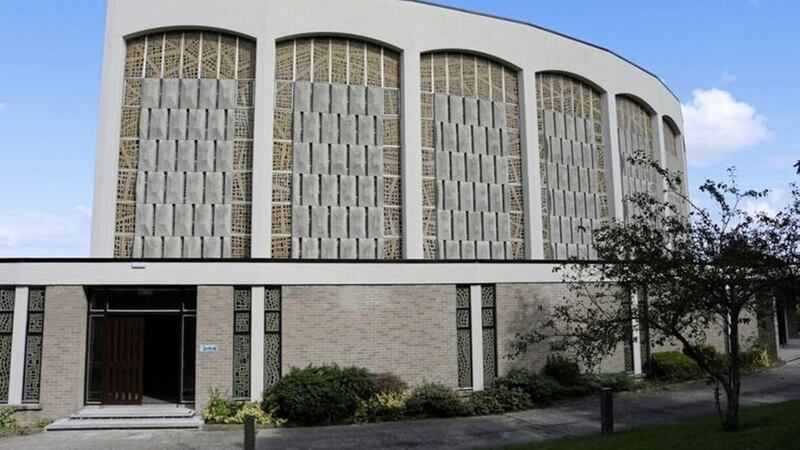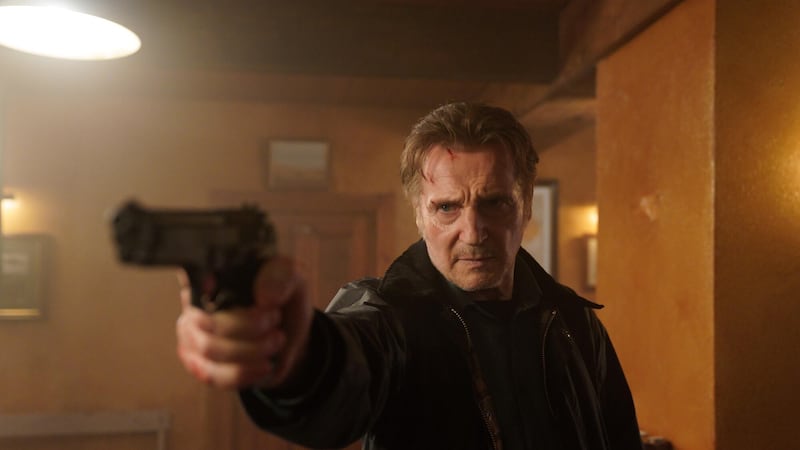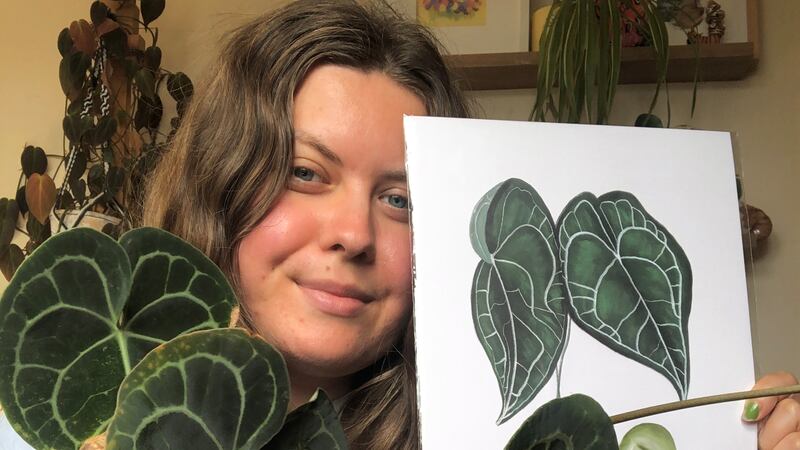IT is one of Ireland's most distinctive places of worship, and St Bernadette's Church - situated just off Belfast's ring road - has been recently described by an architectural commentator as "a quiet anomaly in Knockbreda, south Belfast", where "it forms a prominent landmark and an architecturally interesting presence amid its suburban surroundings".
In a similar vein, the government's listed buildings department has said that "St Bernadette's is of special architectural interest as an exceptionally well detailed and proportioned mid-twentieth century church."
The story starts in 1954 when a local businessman, Peter Woods, offered the diocese two-and-a-half acres of land on which to build a church, school and parochial house.
On October 29 1967, Bishop of Down and Connor William Philbin opened and dedicated the new church of St Bernadette's
The site at the corner of Rosetta Road and what was then a quiet country road called Hillfoot Road was purchased in May 1954 by Holy Rosary Parish.
Two years later, work began on the building of a much-needed Catholic primary school; St Bernard's Primary School opened in May 1958.
The next step was a fundraising plan for the building of a church.
The large growth in Catholic population in the area had resulted in the modest-sized Holy Rosary Church on Ormeau Road bursting at the seams.
Parishioners were asked to donate one shilling a week towards the cost of the church, while other activities to generate funds took place.
An important change during the planning process was the decision that the church be named in honour of St Bernadette, rather than the originally-intended St Bernard, and so the seeds of the building's strong links to Our Lady were sown.
The foundation stone of St Bernadette's Church was eventually blessed and laid on September 8 1965 - the Feast of the Birth of Our Lady.
Work proceeded at pace and on October 29 1967 - then the date of the Feast of Christ the King - Bishop of Down and Connor William Philbin opened and dedicated the new church.
The principal celebrant was Monsignor Patrick Mullally and Cahal Daly, then Bishop of Ardagh and Clonmacnoise - also a previous and subsequent resident of Holy Rosary Parish - preached on the role of religious education in schools in bringing love, forgiveness and reconciliation to divided communities.
St Bernadette's is of special architectural interest as an exceptionally well detailed and proportioned mid-twentieth century church
The music for the Dedication Mass was provided by the Belfast Gaelic Choir, conducted by Gerry O'Rawe, and the Holy Rosary Parish Choir, directed by Danny Burke, with organists Bob Leonard and Fr Noel Watson. Bob Leonard and Gerry O'Rawe served respectively as organist and choirmaster in St Bernadette's between 1967-78 and 1988-2004.
In the spirit of the Second Vatican Council, and in recognition of the great efforts made across the parish and beyond to get to that day, parishioner George Black spoke on behalf of the laity at the Mass and a reception.
The Church building itself was, according to its architect Brian Gregory, heavily influenced by the latest developments in ecclesiastical architecture "both by reason of its simplicity and the use of modern materials, and also its alliance with contemporary artists who brought a fresh idea to old themes".
The church's exterior, in its simplicity and with the use of concrete as the main building material, is an example of the architectural style known as Brutalism.
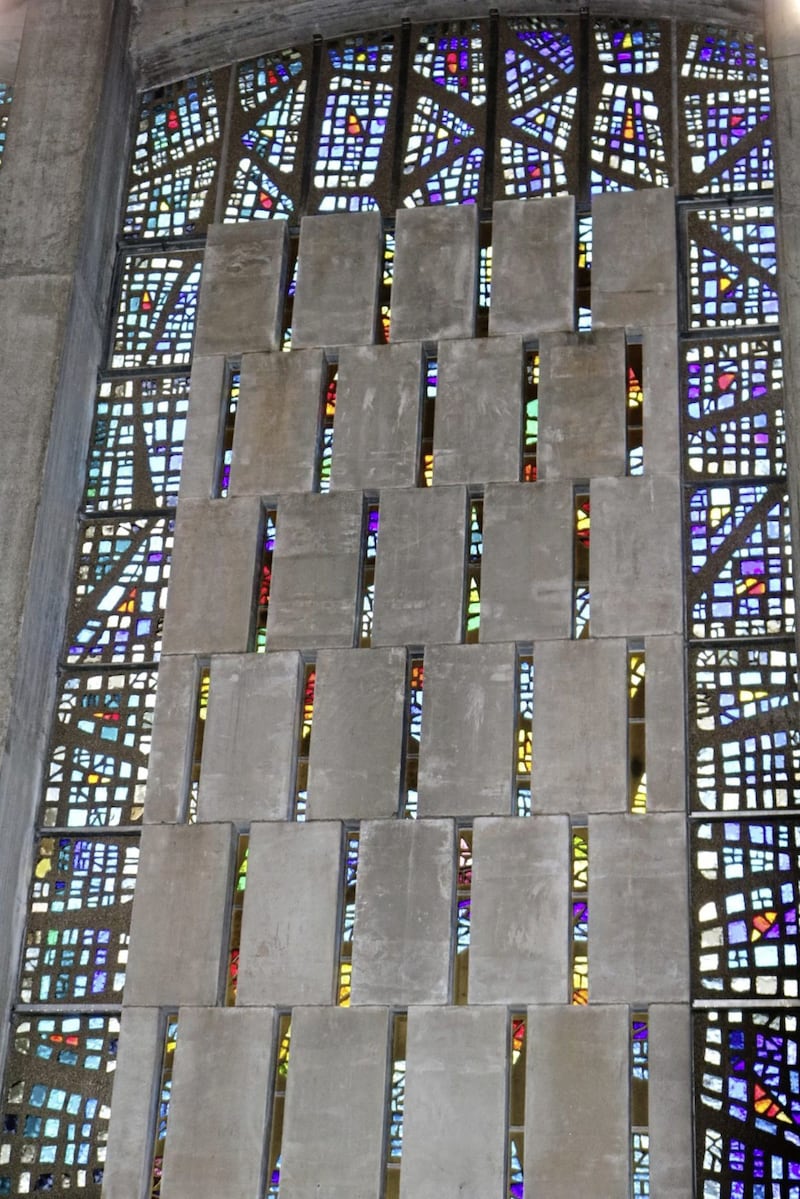
Its fan-shaped structure can accommodate around 1,000 people, all of whom are within 60ft of the altar and have a clear view of it, in keeping with the thinking that had emerged from the Second Vatican Council.
The size of the church, measuring 105ft by 105ft at its extremities, also made it the largest parish church in Down and Connor, an honour which it retains to this day.
The interior, with its play of light and colour, provides a marked contrast to the mainly monotone exterior, and is distinguished by some important pieces of furniture, including an acclaimed sculpture of Christ by Dame Elisabeth Frink.
The 40ft high ceiling enhances the impression of spaciousness, while the stained glass windows, using the method of dalle de verre or slabs of glass, reflect the Alpha and Omega in a range of vibrant colours, culminating in a vivid cross in the centre.
The church is specifically oriented such that on a bright day the morning sun shines directly onto the sanctuary wall, illuminating it during the time at which Mass is normally celebrated; in the days around midsummer the high sun lights up the tabernacle itself.
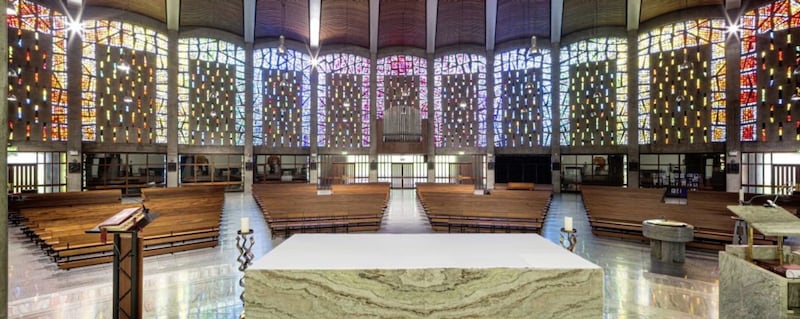
St Bernadette's - which cost around £3 million in today's terms - was not fully paid off until 1976, with fundraising having lasted nearly 20 years.
As well as the church building, very significant funding was at that time also required for five parish schools and a new building for Rosario Youth Club.
St Bernadette's remained as part of Holy Rosary Parish until February 1988, when it became a parish in its own right, with its own Parish Priest, the first of whom was Fr Fred MacSorley.
The renovation was a huge undertaking and is now almost complete - the cost was around £1 million - and was achieved without any public funding
He oversaw the addition of the parish centre, which opened in 1994, and remained until his retirement in August 2003 when Fr Paul Armstrong was appointed.
Since then, Fr Armstrong has served the parish single-handed, as the shortage of priests in Down and Connor resulted in St Bernadette's no longer having an assistant priest.
When the church was in its fifth decade it was clear that significant renovation work - particularly of the roof, windows and heating - was going to be required.
It was a huge undertaking and is now almost complete - the cost was around £1 million - and was achieved without any public funding.
The most visible - and symbolic - element of the renovation was the removal of window grilles which had been installed in the 1970s in response to sectarian strife in the area and repeated vandalism.
With this and the recent removal of the hedge which previously restricted the view from the ring road, St Bernadette's again stands properly visible to passers by as an icon of hope and faith.
And while the church building is at the heart of the parish - which today has a population of around 3,500 - it is the faith in action which radiates from St Bernadette's which helps make it a truly special landmark.
- A 50th Anniversary Mass to celebrate the opening and dedication of St Bernadette's Church will take place at 3pm on Sunday October 29. Bishop Anthony Farquhar will preside. The liturgy will include many of the parts of the Mass of Dedication that was celebrated 50 years ago.
- With thanks to Patricia Kernaghan, who has researched the history of the church and parish.
